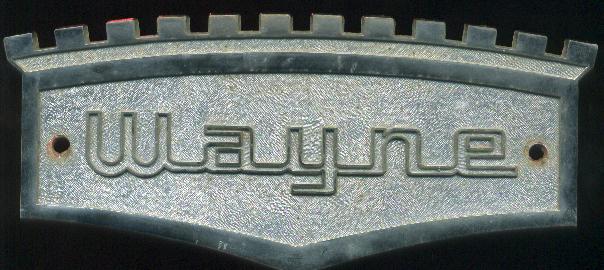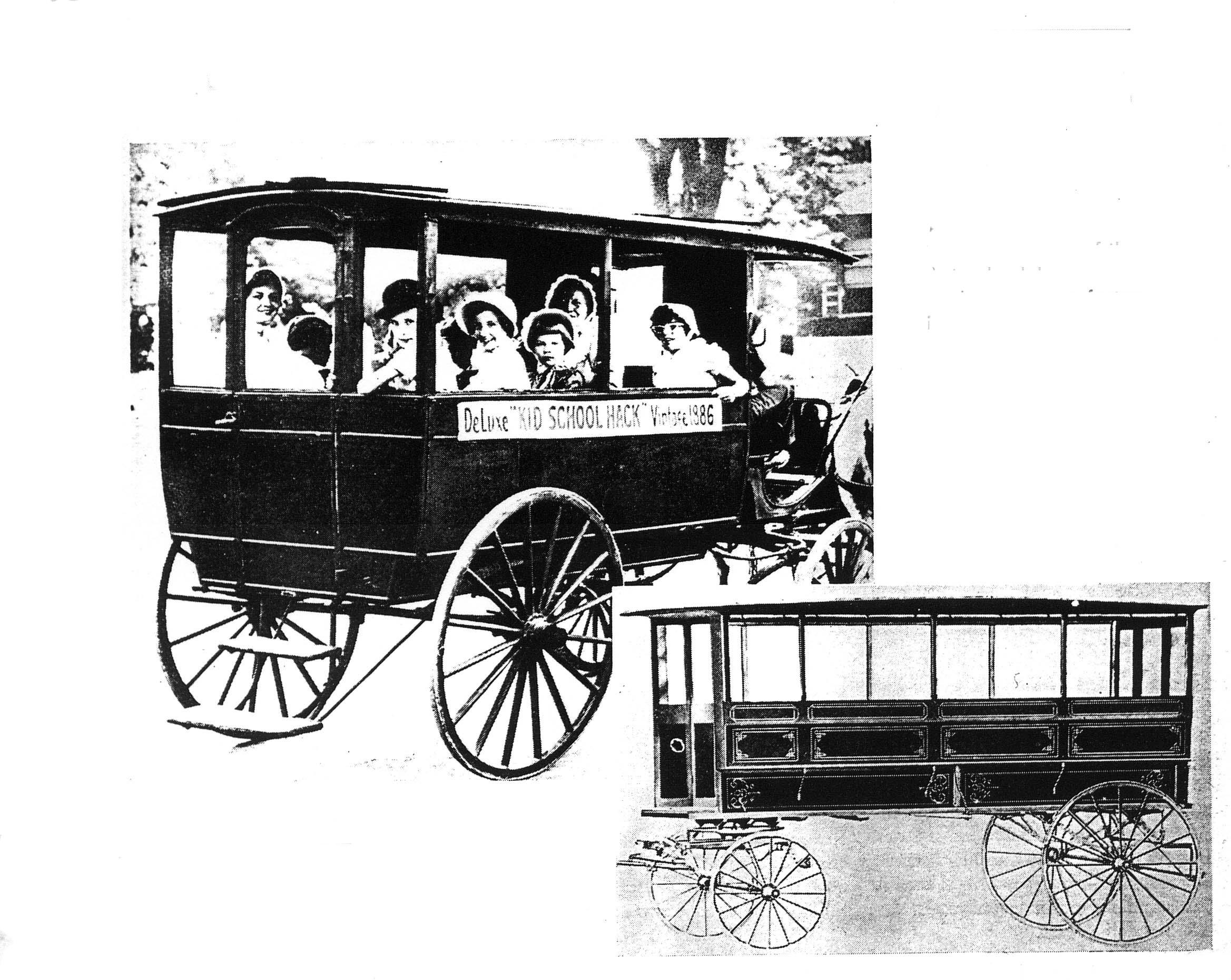
Wayne, an early school bus manufacturer, has a long and fascinating place in America's transportation history. Some sources give 1837 as Wayne Works' founding year, while others claim Wayne Works was in business "since 1868." The company's own literature has referred to both years as the beginning. A 1947 brochure mentions that Wayne Works had been in business for 110 years. A 1920 brochure makes what might be a qualification stating that Wayne Works "vehicles" had been manufactured "since 1868." One certainty is that Wayne Works never started as a bus manufacturer, but as a maker of various sorts of agricultural tools. According to the History of Wayne County, Indiana, v. II, (Chicago: Inter-State Publishing Co., 1884, pp. 534-535), a foundry known as "Wayne Agricultural Works" was started by John Whippo, Caleb W. and James Witt at Dublin, Indiana, in 1837. Wayne Agricultural Works, sometimes referred to as "Wayne Agricultural Company," was soon transferred by Whippo to four Witt brothers. Norton Davis I. L. Lawrence eventually purchased the company. It became a stock company in 1871 and moved to Richmond, Indiana, in 1876.

I haven't yet found when Wayne Works started making vehicles. However, by 1886 Wayne Works made school carriages which many people referred to as "school hacks," "school cars," "school trucks," or "kid hacks." Photo furnished by Divco-Wayne to Nation's Schools, May 1960, p.85.

According to School Bus, Burton Belknap (circa 1951), and the May 1960 Nation's Schools, the company created the predecessor to the modern motor school bus in 1914 when Wayne Works dropped a wooden kid hack onto an automobile chassis. However, there were a few cases in which other "regular" motor buses had already been used by schools. In addition, Wayne Works had already manufactured a car known as the Richmond earlier in the century. I'm curious as to why Wayne Works made the apparent delay in "motorizing" their school bus. Photo furnished by Divco-Wayne to Nation's Schools, May 1960, p. 87.

By the 1930s, Wayne Works bus bodies seem to finally have lost that carriage shape. Photo furnished by Divco-Wayne to Nation's Schools, May 1960, p. 89.

In the 1930s, Wayne Works had manufactured some transit school buses, although they do look different from modern front- and rear-engined models. Photo furnished by Divco-Wayne to Nation's Schools, May 1960, p. 91.
According to http://www.divco.org/, Divco, a notable milk delivery vehicle manufacturer, partnered with Wayne Works in 1957 and was Divco-Wayne until 1967 or 1968. In the late 1960s or early 1970s, Wayne Corporation became part of Indian Head Corporation, as noted by the Indian Head emblem on the roof. I'm not sure if Wayne changed hands a few more times, but it was eventually bought by BMY, a primarily military vehicle division of Harsco in 1992. BMY moved Wayne a short distance from Richmond, Indiana, to Marysville, Ohio, and changed the name to "Wayne Wheeled Vehicles." Carpenter acquired the Richmond plant. In October 2000, Spartan Motors announced plans to liquidate Carpenter, so the future of the Richmond plant is uncertain.
Around 1995, BMY decided to get out of the school bus business. Deals to sell Wayne Wheeled Vehicles fell through, and the Ohio plant was eventually shut down. I wonder who now owns the Wayne design copyrights/patents and the Wayne name?

Throughout the late 1930s, '40s, '50s, and early '60s, Wayne bodies can be identified by a slightly flat roof, very round back end, and a heavy side "guard rail" slightly higher from the bottom of the structure. Waynes and some other bodies also had small rear wheel wells. Picture from a circa 1947 Wayne Works brochure.

Wayne's main business was manufacturing school bus bodies. However, as seen on their old matchbook cover ads, Wayne-bodied buses were sometimes used as other types of buses, either conventional or transit. Trailers used for passengers seems to be an intereresting concept. From a1940s Wayne Works match cover advertisement from matchcoverguy posted on Ebay's bus section.
I hope this sketch is of some value. I hope it is generally correct, although I may have to add or change my understanding of Wayne Works bus history as I try to do a bit more research to satisfy my curiosity. I'll try to find and post more information soon. Please send replies and corrections (especially the latter) to:
Gerald Zimmerman
Carbondale, Illinois
cyberkotic@yahoo.com